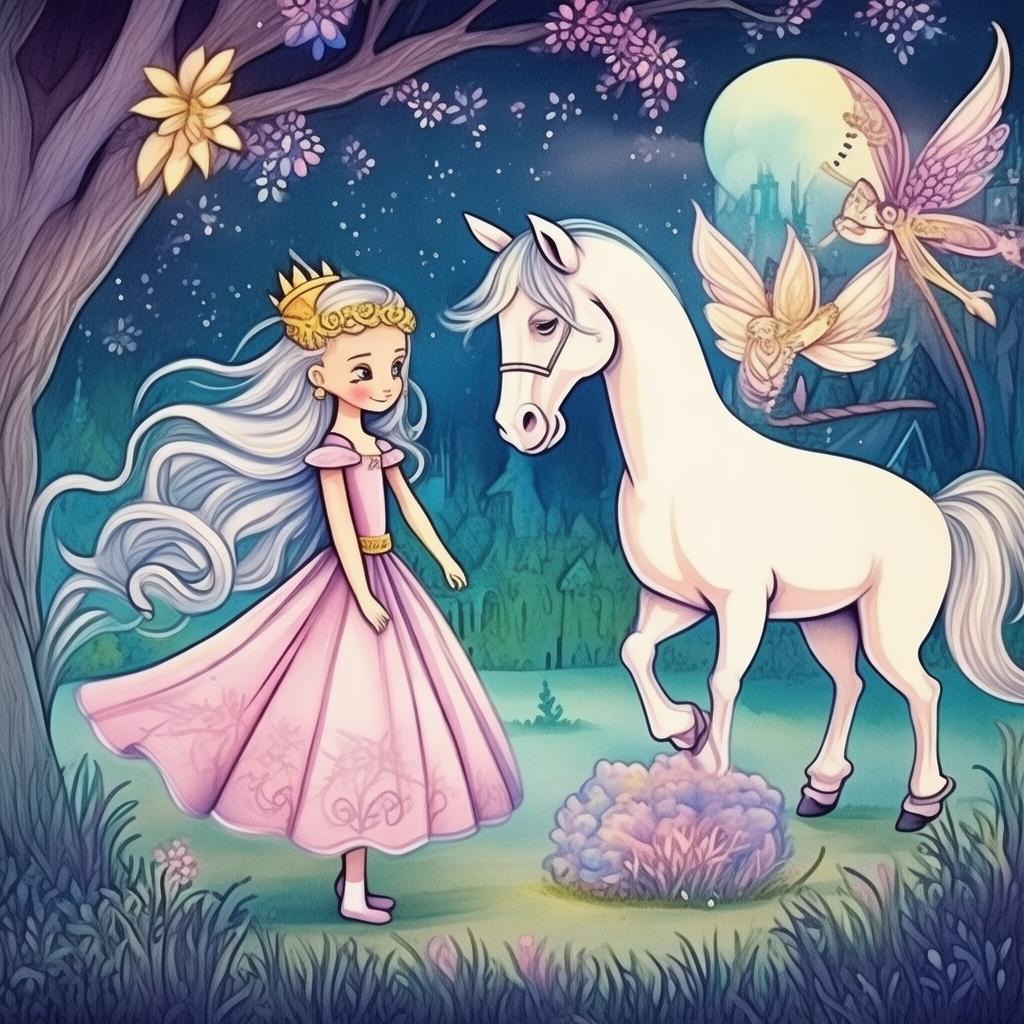The Starlit Symphony: A Whisper in the Constellations
Once upon a time, in a world where the stars danced and sang in the heavens, there lived a girl named Lila. Her eyes were like pools of the night sky, reflecting the infinite stars that adorned the velvet canvas of the cosmos. Lila had a secret, a secret that no one else in her village knew—the ability to communicate with the stars themselves.
Every night, as the sky was blanketed in a tapestry of twinkling lights, Lila would climb the highest peak, where the air was crisp and the stars seemed to whisper secrets. With a small, hand-painted symphony of musical instruments that she had crafted herself, she would compose melodies that would seem to resonate with the very essence of the universe.
One fateful evening, as the moon cast its silver glow upon her, Lila felt a strange pull, as if the stars were calling to her. She reached out, her fingers dancing over the strings of her handmade violin. The music she played was unlike anything her village had ever heard—a blend of celestial harmony and the raw power of the cosmos.
In the distance, a constellation that had never before shown itself began to shimmer, its points brightening until they glowed with a soft, golden light. The stars, enchanted by Lila's song, aligned into a pattern that spelled out a message, one that was not meant for the ears of man but for the heart of the universe itself.
It was then that the magic of the cosmos began to weave its spell. The music of Lila's violin began to affect the very fabric of space and time, causing the constellations to move in a dance that had never been witnessed before. The universe seemed to listen, to hum in response to the symphony of stars.
The villagers, awoken by the celestial music, flocked to the hill where Lila played. They had never seen anything like it before—stars that seemed to move in time with the melody, as if they were the notes of a vast, invisible orchestra. The music was not just beautiful, it was alive, a living entity that could change the world as it played.
Amidst the crowd, there was a young boy named Ewan, who had always been fascinated by the stars. He had often dreamed of traveling through the heavens, of touching the constellations and making them sing. Ewan approached Lila, his eyes wide with wonder.
"What are you doing?" he whispered, his voice barely audible over the music.
Lila stopped playing and looked at Ewan, her eyes reflecting the stars above. "I'm listening to the universe," she replied, her voice as soft as the wind.
Ewan's heart swelled with curiosity and a sense of belonging. He reached out and touched Lila's violin, feeling its warmth and the magic that seemed to pulse through its strings.
Together, Lila and Ewan began to communicate with the stars, not through words, but through music and emotions. The stars, in turn, revealed their stories to them, their secrets and their joys.
As the night wore on, the music became more intense, more powerful. The constellations continued to dance, and the magic of the symphony began to alter the very fabric of the universe. Time itself seemed to bend and stretch, and the boundaries between worlds began to blur.
Suddenly, the music reached a crescendo, and the stars burst into a spectacular display of colors, their light weaving patterns in the sky. The villagers watched in awe, their eyes wide with wonder.

The magic was not just visible—it was palpable, a force that seemed to fill the world with a sense of hope and unity. The stars had answered Lila's call, and their voices had become one with her symphony.
But the magic was fleeting. The stars began to drift apart, the music fading into the distance. Lila and Ewan, feeling the loss of the connection they had made, watched as the constellations returned to their normal patterns, the music now nothing more than a faint echo in the cosmos.
As the first light of dawn began to filter through the sky, Lila and Ewan made their way back to the village. They had changed, their hearts filled with the knowledge that the universe was alive, and that they had been a part of something extraordinary.
The villagers, when they saw the two children walking through the dawn, felt a sense of wonder and hope. They knew that something special had happened that night, something that would never be forgotten.
Lila continued to play her music, but it was no longer just for the stars. She played for the villagers, for the children, for anyone who would listen. And though the magic of the symphony had faded, the music that Lila played was filled with a new kind of magic—a magic of hope, of connection, and of the universe's whisper in the constellations.
And so, the story of Lila and the Starlit Symphony lived on, a tale that would be told for generations, a reminder that even in the vastness of the cosmos, music could bridge the stars, and magic could change the world.
✨ Original Statement ✨
All articles published on this website (including but not limited to text, images, videos, and other content) are original or authorized for reposting and are protected by relevant laws. Without the explicit written permission of this website, no individual or organization may copy, modify, repost, or use the content for commercial purposes.
If you need to quote or cooperate, please contact this site for authorization. We reserve the right to pursue legal responsibility for any unauthorized use.
Hereby declared.









